
Kota Bharu: The Cultural Heart of Malaysia
Discover the cultural heart of Malaysia in Kota Bharu, where vibrant markets, rich history, and stunning natural beauty await.
Nestled in the northeastern corner of Malaysia, Kota Bharu is a city where tradition and culture thrive. Known for its vibrant arts, crafts, and culinary delights, this city offers a unique glimpse into the Malaysian way of life. The city's bustling markets, such as Pasar Siti Khadijah, are a sensory explosion with colorful textiles, aromatic spices, and friendly vendors ready to share their stories. A visit to Kota Bharu is incomplete without exploring its rich history. The Royal Museum, once the residence of Kelantan's sultans, provides an intimate look at the region's royal heritage. Additionally, the Islamic Museum and the Handicraft Village and Craft Museum offer insights into local craftsmanship and religious practices. Kota Bharu is also a gateway to some of Malaysia's most stunning natural beauty. Nearby, you can find pristine beaches like Pantai Cahaya Bulan, perfect for a leisurely day under the sun. For those who enjoy more adventurous activities, the lush jungles and serene rivers in the vicinity offer ample opportunities for exploration and relaxation.
Local tips in Kota Bharu
- Dress modestly, especially when visiting religious sites and rural areas, to respect local customs.
- Try the local dishes like Nasi Kerabu and Ayam Percik at Pasar Siti Khadijah for an authentic taste of Kelantanese cuisine.
- Visit the markets early in the morning to experience the freshest produce and the liveliest atmosphere.
- Take a boat ride along the Kelantan River for a different perspective of the city's scenic landscape.
Kota Bharu: The Cultural Heart of Malaysia
Nestled in the northeastern corner of Malaysia, Kota Bharu is a city where tradition and culture thrive. Known for its vibrant arts, crafts, and culinary delights, this city offers a unique glimpse into the Malaysian way of life. The city's bustling markets, such as Pasar Siti Khadijah, are a sensory explosion with colorful textiles, aromatic spices, and friendly vendors ready to share their stories. A visit to Kota Bharu is incomplete without exploring its rich history. The Royal Museum, once the residence of Kelantan's sultans, provides an intimate look at the region's royal heritage. Additionally, the Islamic Museum and the Handicraft Village and Craft Museum offer insights into local craftsmanship and religious practices. Kota Bharu is also a gateway to some of Malaysia's most stunning natural beauty. Nearby, you can find pristine beaches like Pantai Cahaya Bulan, perfect for a leisurely day under the sun. For those who enjoy more adventurous activities, the lush jungles and serene rivers in the vicinity offer ample opportunities for exploration and relaxation.
When is the best time to go to Kota Bharu?
Iconic landmarks you can’t miss
Siti Khadijah Market
Discover the vibrant Siti Khadijah Market in Kota Bharu, a cultural gem filled with fresh produce, traditional crafts, and mouth-watering local dishes.

ÆON Mall Kota Bharu
Discover the ultimate shopping experience at ÆON Mall Kota Bharu, blending modern retail with local culture in the heart of Kelantan.
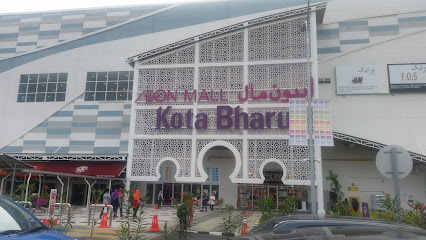
Kopitiam Kita
Discover the vibrant flavors of Malaysia at Kopitiam Kita, Kota Bharu's beloved breakfast café and local dining gem.

KB Mall
Discover the lively KB Mall in Kota Bharu, where shopping, dining, and entertainment blend seamlessly for an unforgettable experience.

Muhammadi Mosque
Explore Muhammadi Mosque: A Historical Marvel and Spiritual Sanctuary in the Heart of Kota Bharu, Kelantan.

Pantai Senok
Experience the tranquil beauty of Pantai Senok, a hidden beach gem in Kota Bharu, Kelantan, perfect for relaxation and stunning coastal views.

Stadium Sultan Muhammed IV ( Kota Bharu, Kelantan )
Experience the passion of Malaysian sports culture at Stadium Sultan Muhammed IV in Kota Bharu, a hub for thrilling matches and community spirit.

Pok Loh Milo Tunggeng
Experience the authentic flavors of Malaysia at Pok Loh Milo Tunggeng, renowned for its breakfast delights and signature Milo drinks in Kota Bharu.

Istana Jahar
Explore the royal legacy of Malaysia at Istana Jahar, a captivating museum in Kota Bharu showcasing rich cultural artifacts and traditional architecture.

Dataran Cheng Ho
Explore Dataran Cheng Ho, a historical landmark in Kota Bharu, Kelantan, celebrating the legacy of Zheng He amidst vibrant culture and stunning architecture.

Kelantan State Museum
Explore the Kelantan State Museum and immerse yourself in the vibrant history and culture of Kelantan, Malaysia.

Street Art Kota Bharu
Explore the breathtaking Street Art Kota Bharu, where local heritage meets contemporary creativity in a stunning outdoor gallery.

Wat Phothikyan Phutthaktham
Discover the spiritual beauty of Wat Phothikyan Phutthaktham, a serene Buddhist temple in Bachok, featuring a majestic standing Buddha and lush surroundings.
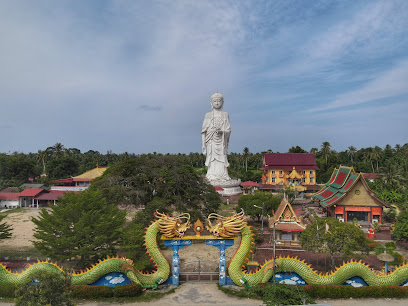
Handicrafts Village
Explore Handicrafts Village in Kota Bharu, Kelantan, where Malaysian artistry comes alive through traditional crafts and engaging artisan experiences.

Terminal Bas Kota Bharu
Experience the vibrant hub of Terminal Bas Kota Bharu, your gateway to exploring Malaysia's enchanting east coast destinations.

Unmissable attractions to see
Siti Khadijah Market
Discover the vibrant Siti Khadijah Market in Kota Bharu, a cultural gem filled with local delicacies, crafts, and the spirit of Kelantan.

Muhammadi Mosque
Discover the beauty and cultural significance of Muhammadi Mosque, a stunning landmark in Kota Bharu, showcasing exquisite Islamic architecture.

Taman Perbandaran Tengku Anis
Explore the tranquil beauty of Taman Perbandaran Tengku Anis, a picturesque park in Kota Bharu, perfect for relaxation and outdoor activities.
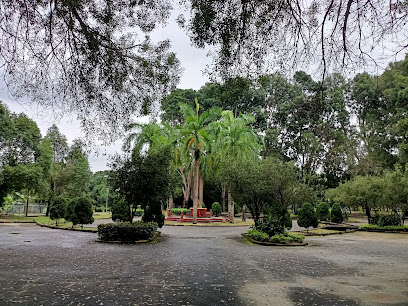
Wat Phothivihan (Sleeping Buddha)
Explore the serenity of Wat Phothivihan in Tumpat, Kelantan, home to Malaysia's largest Sleeping Buddha statue, a tranquil haven for spiritual reflection.

Kampung Laut Cultural Heritage Site
Explore the vibrant traditions and rich heritage of the Malay community at Kampung Laut Cultural Heritage Site in Tumpat, Kelantan.
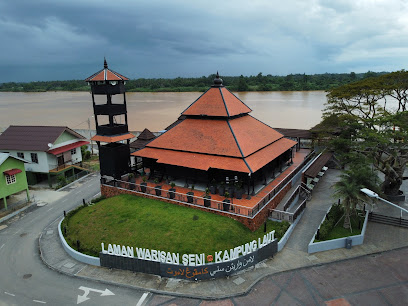
Istana Jahar
Explore the rich history and cultural heritage of Kelantan at Istana Jahar, a stunning royal palace turned museum in Kota Bharu.

Istana Jahar
Immerse yourself in the royal history and vibrant culture of Istana Jahar, a historical museum in the heart of Kota Bharu, Kelantan.

Kelantan State Museum
Explore the rich cultural heritage of Kelantan at the Kelantan State Museum, where history and tradition come alive.

Handicrafts Village
Discover the vibrant Handicrafts Village in Kota Bharu, where Malaysia's artistic traditions come to life through exquisite crafts and engaging cultural experiences.

Tengku Anis Park
Experience the lush greenery and serene atmosphere of Tengku Anis Park, a perfect oasis for relaxation and family fun in Kota Bharu, Kelantan.

Al-Quran Rehal Park, Kota Bharu, Kelantan.
Experience the serene beauty and cultural richness of Al-Quran Rehal Park in Kota Bharu, a must-visit destination for every traveler.
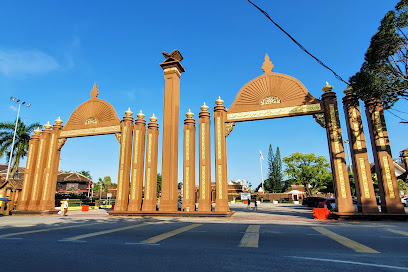
Dataran Muhammadi
Explore Dataran Muhammadi, Kota Bharu's vibrant public square, rich in culture, history, and delicious local cuisine.

Chinatown Kelantan ( Kota Bharu, Kelantan )
Explore the vibrant streets of Chinatown Kelantan, where culinary delights and rich cultural heritage await every traveler.

Tokong Mek Tin Hin Kong
Experience the tranquil beauty and rich cultural heritage of Tokong Mek Tin Hin Kong, a must-visit Taoist temple in the heart of Kota Bharu, Malaysia.

Menara Tinjau Tambatan Diraja
Explore the breathtaking views and cultural heritage at Menara Tinjau Tambatan Diraja in Kota Bharu, a must-visit tourist attraction in Kelantan.

Essential places to dine
Kopitiam Kita
Discover authentic Malaysian flavors at Kopitiam Kita in Kota Bharu - your go-to spot for delicious breakfast and cozy café vibes.
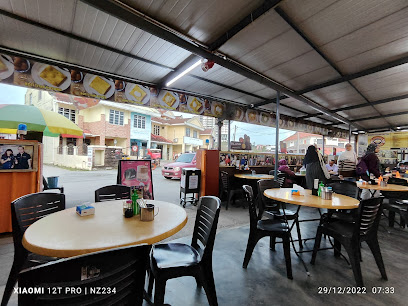
Wau Restaurant
Experience the rich flavors of authentic Malay cuisine at Wau Restaurant in Kota Bharu – where every meal tells a story.
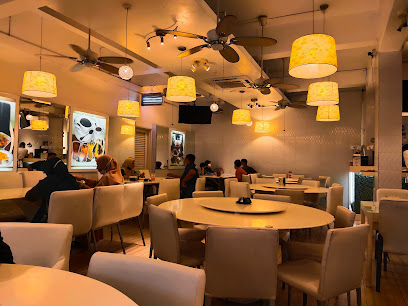
SIAM - Restoran Ikan Bakar & Thai Street Food
Experience authentic Thai cuisine at SIAM - Restoran Ikan Bakar & Thai Street Food in Kota Bharu, where flavors come alive with every bite.

Suriani Nasi Kukus
Discover the rich flavors of Malaysia at Suriani Nasi Kukus - where tradition meets taste in every bite.

Four Seasons Restaurant Sdn Bhd
Savor the best Halal cuisine at Four Seasons Restaurant in Kota Bharu, where authentic flavors meet exceptional hospitality.

Keng Som
Discover authentic Thai flavors at Keng Som in Kota Bharu – where every dish tells a story.

Sun Two (STR Family Restaurant), Halal
Discover authentic Halal cuisine at Sun Two Family Restaurant in Kota Bharu - where flavor meets family-friendly hospitality.

Pizza Hut Restaurant Kota Bharu
Savor delicious pizzas and Italian favorites at Pizza Hut Restaurant in Kota Bharu - perfect for families and food lovers alike.

Restaurant Hover
Experience authentic Padang cuisine at Restaurant Hover in Kota Bharu, where tradition meets flavor in every dish.

Restoran Sri Chengmai
Experience the vibrant flavors of Malaysia at Restoran Sri Chengmai - a top dining destination in Kota Bharu offering authentic dishes and warm hospitality.

Shan Sri Dewi Restaurant Sdn. Bhd.
Experience authentic Indian flavors at Shan Sri Dewi Restaurant in Kota Bharu - a delightful culinary destination for every traveler.
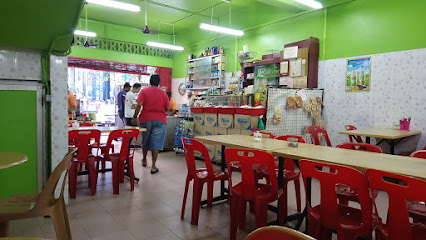
Golden City Restaurant
Discover the vibrant culinary scene at Golden City Restaurant - where Western flavors meet local charm in Kota Bharu.

Deepa Curry House
Discover authentic Indian flavors at Deepa Curry House in Kota Bharu – where every dish tells a story.

Restoran Sri Cola
Discover the vibrant tastes of Malaysia at Restoran Sri Cola - where traditional flavors meet modern fusion cuisine.

Ann Loke Cafe
Experience the authentic flavors of Malaysia at Ann Loke Cafe in Kota Bharu - a cozy spot known for its famous chicken rice and nostalgic ambiance.

Markets, malls and hidden boutiques
ÆON Mall Kota Bharu
Explore ÆON Mall Kota Bharu: Your Ultimate Shopping Destination for Fashion, Food, and Fun in Malaysia.

KB Mall
Discover the vibrant KB Mall in Kota Bharu, where shopping meets dining and entertainment in a unique blend of local culture.

Watsons Lotus's KB Mall
Explore Watsons Lotus's KB Mall in Kota Bharu for an exquisite selection of health and beauty products that cater to every need.

Billion Shopping Centre (Sri Mutiara)
Explore Billion Shopping Centre in Kota Bharu - a vibrant hub for shopping, dining, and experiencing local culture in Malaysia.

ÆON Store Kota Bharu
ÆON Store Kota Bharu: Your ultimate shopping destination in Malaysia with a variety of brands, dining, and entertainment options.

Bazar Tok Guru
Discover the vibrant Bazar Tok Guru in Kota Bharu, a clothing store offering traditional and modern apparel celebrating Malaysian fashion.

Pantai Timor Shopping Center (Pintu Pong)
Discover the vibrant shopping scene at Pantai Timor Shopping Center, a premier destination for fashion, food, and entertainment in Kota Bharu.

Butik Fashionista, Pelangi Mall, Kota Bharu, Kelantan.
Explore the latest fashion trends at Butik Fashionista in Pelangi Mall, Kota Bharu, a chic clothing store offering styles for everyone.

Twenty Five Degrees Concept Studio @ KB Mall
Explore the charm of local craftsmanship at Twenty Five Degrees Concept Studio, your go-to gift shop in Kota Bharu for unique souvenirs and artisan treasures.

Bazar Tengku Anis
Experience the vibrant culture and shopping delights of Bazar Tengku Anis in Kota Bharu, Kelantan, a must-visit destination for every traveler.

Zon Ria Kota Bharu
Explore the vibrant fashion scene at Zon Ria Kota Bharu, where local trends and styles come together for an unforgettable shopping experience.
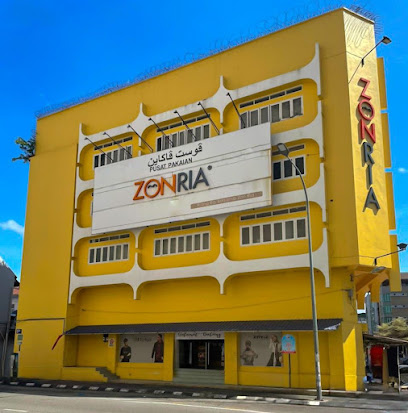
Kelantan Silk Store
Explore the rich heritage of Malaysian textiles at Kelantan Silk Store, a treasure trove of exquisite silk and unique fabrics in Kota Bharu.

KHATAM Warisan Kota Bharu
Explore KHATAM Warisan Kota Bharu, where local craftsmanship meets cultural heritage in a vibrant boutique setting.

MARS BOUTIQUE
Discover unique styles at Mars Boutique, a fashion haven for tourists seeking quality clothing and exceptional service.

Azhari Antiques Gallery
Discover the charm of Malaysian history at Azhari Antiques Gallery, where every antique tells a captivating story.

Essential bars & hidden hideouts
Golden City Restaurant
Discover the charm of Golden City Restaurant in Kota Bharu, where Western flavors meet local hospitality in a welcoming bar and café setting.

BARAT BISTRO
Experience the best of Western cuisine in Kota Bharu at Barat Bistro, where delicious food meets a cozy atmosphere.

九鼎 Nine Drinks
Discover the lively nightlife and unique cocktails at 九鼎 Nine Drinks in Kota Bharu, the perfect spot for tourists to unwind and socialize.

ALLEY BISTRO
Discover the charm of Alley Bistro, a cozy café in Kota Bharu, serving delicious local and international dishes in a warm atmosphere.
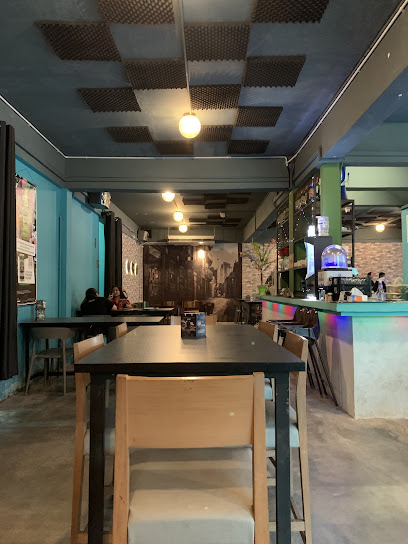
Restoran Kim Leng
Discover the authentic flavors of Malaysia at Restoran Kim Leng, a bar and restaurant in Kota Bharu offering a vibrant dining experience rich in tradition.

Le French Bistro
Savor authentic French cuisine in a cozy ambiance at Le French Bistro, a culinary haven in Kota Bharu, Malaysia.
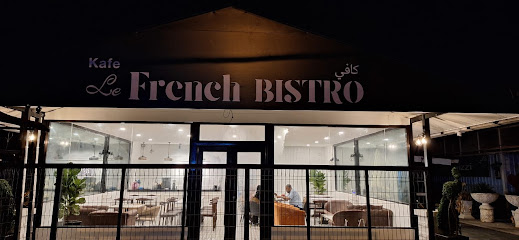
Nick Cafe & Restaurant
Discover the flavors of Malaysia at Nick Cafe & Restaurant, a culinary gem in Kota Bharu's bustling Bazar Tuan Padang.

weiyig
Discover the vibrant nightlife of Kota Bharu at Weiyig Bar, where friendly service and a great selection of drinks await you.

SaRRa Grill
Discover the rich flavors of Malaysia at SaRRa Grill, where expertly grilled dishes meet a cozy dining atmosphere in Kota Bharu.
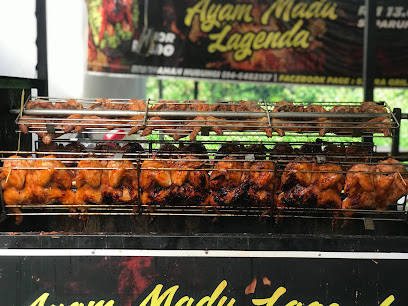
Lynda cafe
Discover the vibrant flavors of Malaysia at Lynda Cafe, a cozy dining spot in Kota Bharu serving traditional dishes in a welcoming atmosphere.

Han Bar
Discover the lively ambiance of Han Bar in Kota Bharu, where a vibrant nightlife awaits with delightful drinks and a friendly atmosphere.

Doctor Cafe & Bistro
Experience authentic Thai flavors at Doctor Cafe & Bistro in Kota Bharu, where every dish tells a story of culinary passion and creativity.

Intan Bar&restaurant
Discover the authentic flavors of Malaysia at Intan Bar & Restaurant in Kota Bharu, where every meal is a celebration of local culinary heritage.

The Frenz Corner
Experience authentic Malaysian cuisine at The Frenz Corner, a culinary delight in the heart of Kota Bharu, perfect for tourists seeking local flavors.

3bg kota bharu
Discover the authentic flavors of Kelantan at 3BG Kota Bharu, where culinary tradition meets vibrant local culture.

Local Phrases
-
- HelloSalam
[sah-lahm] - GoodbyeSelamat tinggal
[suh-lah-maht ting-gahl] - YesYa
[yah] - NoTidak
[tee-dahk] - Please/You're welcomeSila
[see-lah] - Thank youTerima kasih
[teh-ree-mah kah-seeh] - Excuse me/SorryMaaf
[mah-ahf] - How are you?Apa khabar?
[ah-pah kah-bahr] - Fine. And you?Baik. Dan awak?
[bah-ee-k. dahn ah-wahk] - Do you speak English?Boleh cakap Bahasa Inggeris?
[boh-leh chah-kahp bah-hah-sah ing-gehr-ees] - I don't understandSaya tak faham
[sah-yah tahk fah-hahm]
- HelloSalam
-
- I'd like to see the menu, pleaseSaya nak tengok menu, sila
[sah-yah nahk tehn-gohk meh-noo, see-lah] - I don't eat meatSaya tak makan daging
[sah-yah tahk mah-kahn dah-yin] - Cheers!Salam sejahtera!
[sah-lahm se-jah-teh-rah] - I would like to pay, pleaseSaya nak bayar, sila
[sah-yah nahk bah-yahr, see-lah]
- I'd like to see the menu, pleaseSaya nak tengok menu, sila
-
- Help!Tolong!
[toh-lohng] - Go away!Pergi jauh-jauh!
[pehr-ghee jah-oo jah-oo] - Call the Police!Panggil polis!
[pahng-geel poh-lees] - Call a doctor!Panggil doktor!
[pahng-geel dohk-tohr] - I'm lostSaya sesat
[sah-yah suh-saht] - I'm illSaya sakit
[sah-yah sah-keet]
- Help!Tolong!
-
- I'd like to buy...Saya nak beli...
[sah-yah nahk beh-lee] - I'm just lookingSaya hanya tengok-tengok
[sah-yah hahn-yah tehn-gohk-tehn-gohk] - How much is it?Berapa harganya?
[beh-rah-pah hahr-gahn-yah] - That's too expensiveTerlalu mahal
[tehr-lah-loo mah-hahl] - Can you lower the price?Boleh kurangkan harga?
[boh-leh koo-rahn-gahn hahr-gah]
- I'd like to buy...Saya nak beli...
-
- What time is it?Sekarang pukul berapa?
[seh-kah-rahng poo-kool beh-rah-pah] - It's one o'clockPukul satu
[poo-kool sah-too] - Half past (10)Pukul setengah (sepuluh)
[poo-kool suh-tuhng-gah (suh-poo-loh)] - MorningPagi
[pah-gee] - AfternoonPetang
[peh-tahng] - EveningMalam
[mah-lahm] - YesterdaySemalam
[suh-mah-lahm] - TodayHari ini
[hah-ree ee-nee] - TomorrowEsok
[eh-sohk] - 1Satu
[sah-too] - 2Dua
[doo-ah] - 3Tiga
[tee-gah] - 4Empat
[em-paht] - 5Lima
[lee-mah] - 6Enam
[eh-nahm] - 7Tujuh
[too-joo] - 8Lapan
[lah-pahn] - 9Sembilan
[suhm-bee-lahn] - 10Sepuluh
[suh-poo-loh]
- What time is it?Sekarang pukul berapa?
-
- Where's a/the...?Di mana...
[dee mah-nah] - What's the address?Apa alamatnya?
[ah-pah ah-lah-mah-nyah] - Can you show me (on the map)?Boleh tunjukkan saya (di peta)?
[boh-leh toon-jook-kahn sah-yah (dee peh-tah)] - When's the next (bus)?Bila bas seterusnya?
[bee-lah bahs suh-teh-roos-nyah] - A ticket (to ....)Satu tiket (ke ....)
[sah-too tee-keht (keh)]
- Where's a/the...?Di mana...
History of Kota Bharu
-
Kota Bharu, the capital of the state of Kelantan in Malaysia, was founded in 1844 by Sultan Muhammad II of Kelantan. The city was established as the royal seat and administrative center of Kelantan, and its name translates to 'New City' in Malay. The Sultan aimed to develop the area as a thriving hub for trade, culture, and governance.
-
On December 8, 1941, Kota Bharu became one of the first locations in British Malaya to be invaded by Japanese forces during World War II. The Battle of Kota Bharu saw intense fighting between British Indian Army units and the Japanese, marking the beginning of the Malayan Campaign. The Japanese occupation lasted until 1945, leaving a lasting impact on the city's infrastructure and population.
-
Istana Jahar, constructed in 1855 by Sultan Muhammad II, is a historical wooden palace that showcases the intricate craftsmanship of Kelantanese architecture. It served as the official residence for the Kelantanese royal family. Today, it is a museum that offers visitors a glimpse into the royal heritage, traditional customs, and the opulent lifestyle of Kelantan's past rulers.
-
Pasar Siti Khadijah, named after Prophet Muhammad’s entrepreneurial wife, is one of Malaysia's most famous markets. This bustling market is renowned for its vibrant atmosphere and diverse range of goods, from fresh produce and traditional Kelantanese snacks to handcrafted items and textiles. It serves as a cultural melting pot, where visitors can experience the daily lives of the locals and the rich culinary heritage of Kelantan.
-
Masjid Muhammadi, an iconic mosque in Kota Bharu, was established in 1867. It is a significant religious site that symbolizes the Islamic heritage of the city. The mosque has undergone several renovations over the years, blending traditional and modern architectural styles. It remains a central place of worship and a key landmark reflecting the deep-rooted Islamic culture of the region.
-
Wayang Kulit, a traditional shadow puppet theatre, holds a special place in the cultural tapestry of Kota Bharu. This ancient art form, often performed with intricately carved leather puppets, narrates epic tales from Hindu mythology and local folklore. The performances are accompanied by traditional music and are a testament to the city's rich artistic heritage.
-
Kota Bharu is renowned for its dedication to preserving traditional crafts such as batik printing, songket weaving, and silverwork. Workshops and craft centers throughout the city offer demonstrations and opportunities for visitors to learn about these time-honored techniques. These crafts are not only integral to Kelantanese culture but also contribute to the local economy and tourism.
-
The Kelantan State Museum, also known as Muzium Kelantan, is located in Kota Bharu and is a treasure trove of the state's history and culture. Established in 1990, the museum houses artifacts, historical documents, and exhibits that chronicle the evolution of Kelantan from ancient times to the modern era. It serves as an educational resource and a window into the region's rich heritage.
Kota Bharu Essentials
-
Kota Bharu is located in the northeastern part of Peninsular Malaysia. The nearest airport is Sultan Ismail Petra Airport (KBR), which is approximately 10 kilometers from the city center. You can reach Kota Bharu by domestic flights from major cities such as Kuala Lumpur, Penang, and Johor Bahru. Alternatively, you can take a bus or train from Kuala Lumpur or other major cities in Malaysia. The journey by bus or train takes around 8-10 hours. Taxis and car rental services are also available for a more comfortable and flexible travel option.
-
Getting around Kota Bharu is relatively easy. The city has a network of local buses that connect various parts of the city, and taxis are readily available. Ride-hailing services like Grab are also popular and convenient. For short distances, you can rent a bicycle or motorcycle. Walking is a pleasant option in the city center, where many attractions are located close to each other. Car rentals are available for those who wish to explore the surrounding areas at their own pace.
-
The official currency in Malaysia is the Malaysian Ringgit (MYR). Credit and debit cards are widely accepted in most hotels, restaurants, and large retail stores. However, it is advisable to carry some cash, especially when visiting local markets, smaller shops, and rural areas. ATMs are widely available in Kota Bharu, and money changers can be found in shopping malls and near the central market.
-
Kota Bharu is generally a safe destination for tourists. However, it is important to take standard precautions. Avoid walking alone at night in unfamiliar areas and keep an eye on your belongings in crowded places, such as markets and public transport. While Kota Bharu does not have specific high-crime areas targeting tourists, it is always best to stay vigilant and aware of your surroundings.
-
In case of emergency, dial 999 for immediate assistance. The local police station and medical facilities are available in Kota Bharu. It is highly recommended to have travel insurance that covers medical emergencies. For minor health issues, there are numerous pharmacies throughout the city where you can purchase over-the-counter medications. The main hospital in Kota Bharu is the Hospital Raja Perempuan Zainab II, which provides comprehensive medical services.
-
Fashion: Do dress modestly, especially when visiting religious sites. Avoid wearing revealing clothing as Kota Bharu is a conservative city. Religion: Do respect local customs and traditions. Always dress appropriately when visiting mosques and remove your shoes before entering. Public Transport: Do be respectful and give up your seat to elderly passengers. Don’t eat or drink on public transport. Greetings: Do greet people with a smile and a slight bow; handshakes are common but usually not between men and women. Eating & Drinking: Do try local delicacies and accept food offerings graciously. Don’t refuse hospitality, as it is considered impolite.
-
To experience Kota Bharu like a local, visit the Siti Khadijah Market, where you can buy fresh produce, traditional crafts, and local snacks. Engage with locals, as they are often friendly and willing to share stories about the city's history and culture. Don’t miss the opportunity to try Kelantanese cuisine, such as Nasi Kerabu and Ayam Percik. For a unique experience, attend a traditional Wayang Kulit (shadow puppet) performance or a cultural show at the Gelanggang Seni cultural center.
Trending Landmark in Kota Bharu
-
Siti Khadijah Market
-
ÆON Mall Kota Bharu
-
Kopitiam Kita
-
KB Mall
-
Muhammadi Mosque
-
Pantai Senok
-
Stadium Sultan Muhammed IV ( Kota Bharu, Kelantan )
-
Pok Loh Milo Tunggeng
-
Istana Jahar
-
Dataran Cheng Ho
-
Kelantan State Museum
-
Street Art Kota Bharu
-
Wat Phothikyan Phutthaktham
-
Handicrafts Village
-
Terminal Bas Kota Bharu
Nearby Cities to Kota Bharu
-
Things To Do in Kuala Terengganu
-
Things To Do in Cameron Highlands
-
Things To Do in Ipoh
-
Things To Do in Penang
-
Things To Do in George Town
-
Things To Do in Satun
-
Things To Do in Langkawi
-
Things To Do in Kuantan
-
Things To Do in Trang
-
Things To Do in Kuala Lumpur
-
Things To Do in Nakhon Si Thammarat
-
Things To Do in Krabi
-
Things To Do in Malacca
-
Things To Do in Koh Samui
-
Things To Do in Surat Thani








